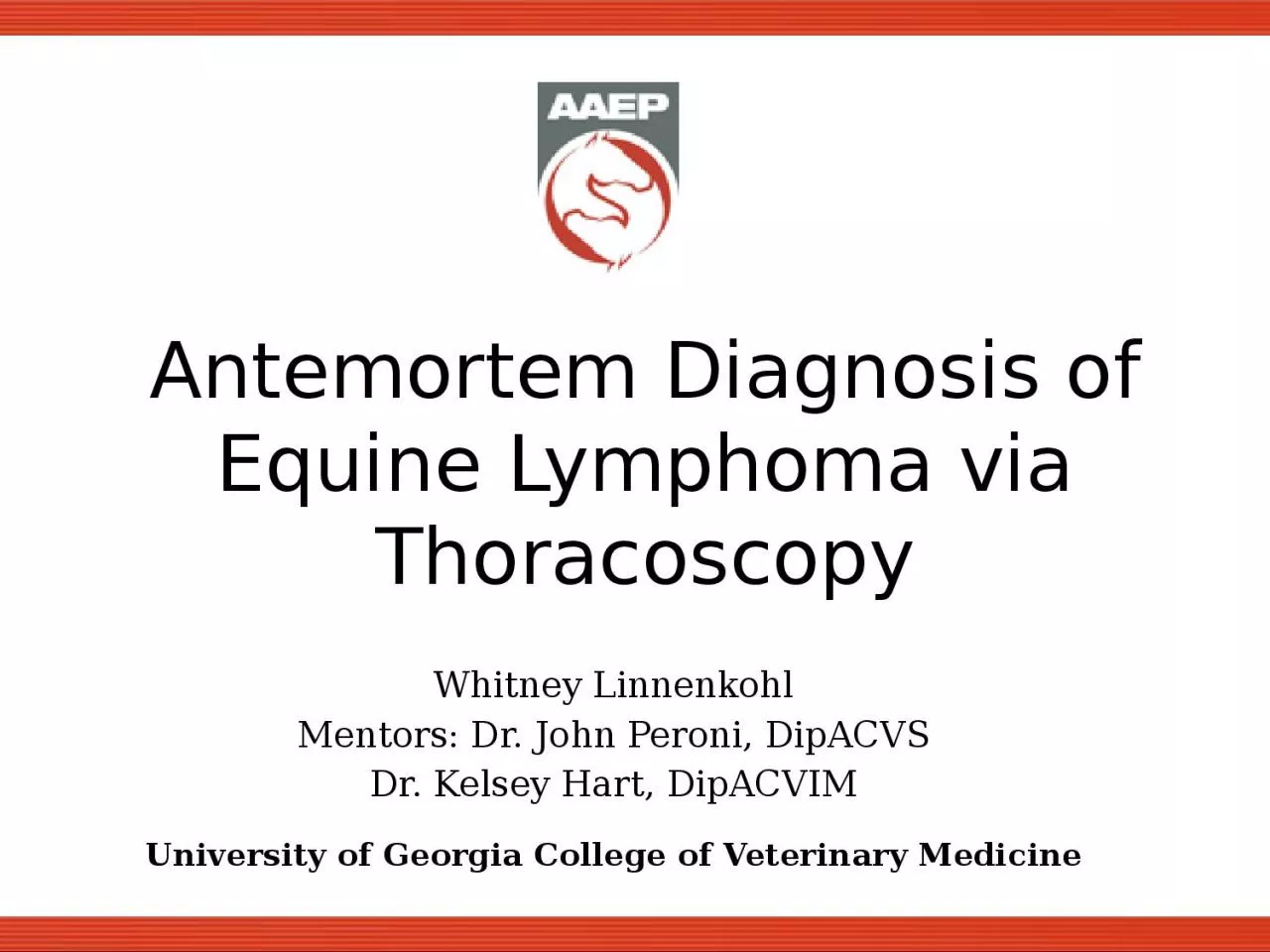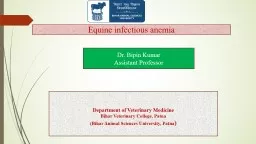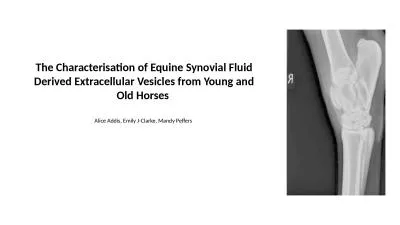PPT-Antemortem Diagnosis of Equine Lymphoma via Thoracoscopy
Author : lydia | Published Date : 2023-11-19
Whitney Linnenkohl Mentors Dr John Peroni DipACVS Dr Kelsey Hart DipACVIM University of Georgia College of Veterinary Medicine History and Signalment 13 Year
Presentation Embed Code
Download Presentation
Download Presentation The PPT/PDF document "Antemortem Diagnosis of Equine Lymphoma..." is the property of its rightful owner. Permission is granted to download and print the materials on this website for personal, non-commercial use only, and to display it on your personal computer provided you do not modify the materials and that you retain all copyright notices contained in the materials. By downloading content from our website, you accept the terms of this agreement.
Antemortem Diagnosis of Equine Lymphoma via Thoracoscopy: Transcript
Download Rules Of Document
"Antemortem Diagnosis of Equine Lymphoma via Thoracoscopy"The content belongs to its owner. You may download and print it for personal use, without modification, and keep all copyright notices. By downloading, you agree to these terms.
Related Documents














